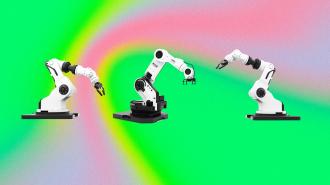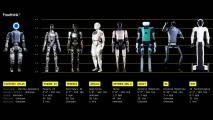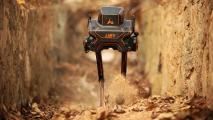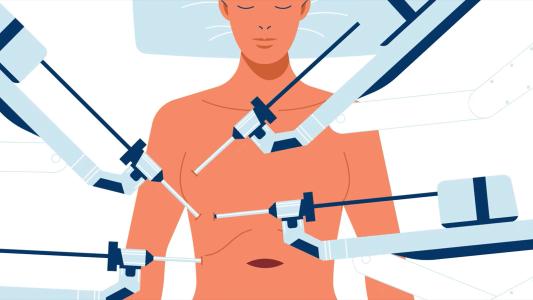While robots are no strangers to work — the first industrial robots rolled into a car factory in 1961 — their capabilities are generally limited. Most perform only one simple, specific task, over and over again; they can’t step outside the box with the adaptability of a human.
A robot able to pick up new tasks with relative ease and consistency — a general-purpose robot — could mean more flexible automation and decreased costs overall. But creating such a bot has proven incredibly difficult; only recently have they begun taking shape as actual entrants into the workforce.
To try and tackle the problem, Google’s DeepMind has developed a self-improving AI agent, called RoboCat, that learns to operate different robotic arms — and take on different tasks — with as little as 100 examples, and it can create its own training data to help sharpen performance.
A general-purpose robot could mean more flexible automation and decreased costs. But creating such a bot has proven incredibly difficult.
“While harnessing recent advances in AI could lead to robots that could help in many more ways,” the developers note in a blog post, “progress in building general-purpose robots is slower in part because of the time needed to collect real-world training data.”
The DeepMind team claims that RobotCat helps solve this problem by learning “much faster” than other models. “This capability will help accelerate robotics research, as it reduces the need for human-supervised training, and is an important step towards creating a general-purpose robot,” they wrote.
RoboCat takes its name from the AI model behind it, Gato. Gato can process actions, images, and languages in both the real world and simulated environments. To kick off RoboCat, the team fed Gato a training set filled with robotic arms doing hundreds of different tasks.
Once its initial training is set up, it’s time for RoboCat’s self-improving AI to get going, honing its skills on a new task in five steps:
– Give it 100 to 1,000 examples of the new task or robot, using a robotic arm piloted by a human.
– Fine tune RoboCat on this specific task, creating a “spin-off agent” for you to continue to develop.
– The spin-off agent practices the task over and over again, physically and virtually — on average, 10,000 times.
– Take the training data from step one and combine it with the data the spin-off agent made for itself.
– Use this much larger data set to train RoboCat on its new task.
“The combination of all this training means the latest RoboCat is based on a dataset of millions of trajectories, from both real and simulated robotic arms, including self-generated data,” the team wrote.
All of these varied examples allow RoboCat to learn how to operate a new robotic arm within a few hours. For example, the team was able to move RoboCat from a two-pronged arm to a three-pronged arm.
Google’s DeepMind has developed a self-improving AI that learns faster than other models and can be trained on new robotic tasks, potentially opening the door to general-purpose robots.
“After observing 1000 human-controlled demonstrations, collected in just hours, RoboCat could direct this new arm dexterously enough to pick up gears successfully 86% of the time,” the team wrote. With the same number of demos, RoboCat could also learn more advanced tasks, “which are necessary for more complex control,” like taking the right fruit out of a bowl or solving a shape-matching puzzle.
That success rate across different tasks varied wildly, though, TechCrunch reported — from 13% to 99%
As a self-improving AI, the more tasks RoboCat learns, the better it should get at learning new tasks. This is because the AI has more experience to draw upon, similar to how people learn over time.
“RoboCat’s ability to independently learn skills and rapidly self-improve, especially when applied to different robotic devices, will help pave the way toward a new generation of more helpful, general-purpose robotic agents,” the authors wrote.
We’d love to hear from you! If you have a comment about this article or if you have a tip for a future Freethink story, please email us at [email protected].





